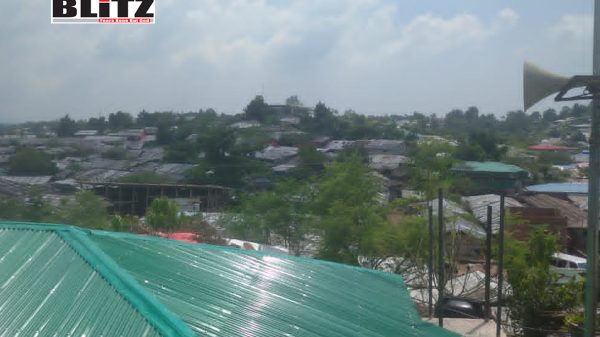Lebanon’s youth demand renewal amid generational divide and national disillusionment
- Update Time : Tuesday, September 30, 2025

Lebanon today stands at a defining crossroads, and perhaps nowhere is this more evident than in the country’s restless younger generation. Disillusioned, traumatized, and deeply skeptical of the political and social structures that once held sway, Lebanese youth are increasingly detached from a system they perceive as having failed them at every level. This generational rupture is not simply a matter of youthful impatience; it represents a profound cultural, political, and existential reckoning for a nation that has endured war, occupation, economic collapse, and institutional decay.
The mood of Lebanon’s youth recalls the cultural shifts of the 1920s in Europe and America, when post-First World War societies rejected old norms and embraced new identities. Just as the “roaring twenties” were marked by rebellion against the institutions that had led Europe into self-destruction, today’s Lebanese youth are questioning the very foundations of their country’s political and social systems. Their frustration is not just with corruption or inefficiency, but with the very idea of Lebanon as it was imagined and governed in the past three decades.
For Lebanon’s young, the civil war is distant history, reduced to fading family stories and dusty political narratives. The Taif Agreement, which was supposed to mark the beginning of peace, has become instead a symbol of stagnation, domination, and betrayal. After Taif, Syria maintained control over Lebanon for 15 years, and when its forces finally withdrew in 2005, Hezbollah’s dominance quickly filled the vacuum. Successive wars, political paralysis, and foreign interventions reinforced the sense that Lebanon remained trapped in cycles of dependency and dysfunction.
Three major protest movements in the span of 15 years failed to produce meaningful change. The Cedar Revolution of 2005, the “You Stink” uprising of 2016, and the mass protests of 2019 each promised to break the mold of the old system. Yet each ended in disappointment, as sectarian divisions, entrenched elites, and external pressures reasserted themselves. To a younger generation watching from the sidelines-or participating in the streets-the repeated failures confirmed a grim truth: the old system is beyond repair.
Worse still, the total collapse of Lebanon’s economy after 2019, the paralysis of its political system, and the catastrophic Beirut port explosion of 2020 stripped away whatever illusions of resilience remained. The failures of the state, banks, judiciary, and army exposed a system rotting from within. “Please don’t tell me there is nothing wrong with us,” one often hears in Lebanon, as despair mixes with anger and disbelief.
The German sociologist Wolfgang Schivelbusch, in his study The Culture of Defeat, offers a useful lens for understanding Lebanon’s generational crisis. He argued that societies suffering military or existential defeat go through predictable phases: shock, depression, scapegoating, emulation of the enemy, and eventually the construction of new myths to restore confidence.
Lebanon fits this pattern, though with its own peculiarities. The initial shock came not from a single defeat but from decades of cascading crises. Depression and self-doubt are widespread among the youth, manifesting in soaring emigration rates and a sense of hopelessness at home. Scapegoating has been directed at the entire political class, with protest slogans such as “All Means All” signaling the wholesale rejection of sectarian leaders and their parties.
At the same time, many Lebanese are caught in the phase of emulation. Disillusioned citizens, especially the young, increasingly look abroad for models of governance-whether Singapore under Lee Kuan Yew, Turkey under Ataturk, or Western democracies. Some even express nostalgia for “benevolent dictatorship,” believing only strong, centralized rule can rescue Lebanon from chaos. This tendency is reflected in Lebanon’s repeated election of ex-army commanders as presidents, a pattern that betrays both a yearning for order and a lack of faith in civilian politics.
The danger, however, is that Lebanon’s youth may abandon not just the political system but also the very idea of Lebanese national identity. When every institution has failed-banks, courts, the army, parliament-what remains to bind a people together? The crisis is not merely political or economic but existential. National identity, once seen as fragile but enduring, now risks dissolving into sectarian loyalties or diasporic escape.
If the postwar generation fully rejects the country’s past, there is the risk of what one might call a “negative founding”-a movement built entirely on opposition to what came before, rather than on a constructive vision for the future. The rejection of sectarianism, for instance, while noble in intent, has not yet produced a workable alternative that accounts for Lebanon’s diversity. The danger is that in tearing down the old, the youth may inadvertently pave the way for authoritarianism, replicating the very systems they despise.
History shows that defeated societies eventually construct new myths to recover self-confidence. The American South recast its military defeat into the myth of the “Lost Cause,” France after 1871 embraced militarization as a way to rebuild pride, and Germany after World War I saw both destructive myths (Nazism) and constructive ones (post-1945 democracy in West Germany). The Lebanese challenge lies in creating a narrative that neither glorifies the failures of the past nor condemns the country to perpetual despair.
This narrative cannot come from the older generation, which remains too entangled in sectarian divisions and personal power struggles. It must be built by the youth themselves, who, in their rejection of the past, hold the potential to imagine something new. Yet they face the immense burden of history: a shattered economy, entrenched elites, regional interference, and a population scarred by decades of instability.
For Lebanon to survive, a dialogue between generations is essential. The older generation cannot simply dismiss the anger of the youth as nihilism, nor can the younger generation afford to ignore the lessons-however bitter-of their elders. Lebanon’s tragedy has been the absence of such dialogue, as each generation retreats into either nostalgia or despair.
What Lebanon needs is a collective reimagining of its mission as a country. Can it remain a pluralistic society in a region marked by authoritarianism and conflict? Can it rebuild trust in institutions while dismantling the corrupt power-sharing system that has paralyzed governance? Can it foster economic recovery without surrendering sovereignty to foreign patrons?
These are monumental questions, and there are no easy answers. Yet the youth, in their very rejection of the old order, represent a chance for rebirth. If they can channel their anger into constructive vision, Lebanon may yet rise from its ruins. But if despair leads them to embrace authoritarian solutions, the country risks losing not only its democracy but also its identity.
Lebanon’s greatest challenge is not merely to repair its broken economy or reform its institutions, but to win back the faith of its disillusioned youth. Without them, no amount of reconstruction or foreign aid will save the country. With them, however, Lebanon has a chance to forge a new social contract that acknowledges the failures of the past while building a more inclusive and resilient future.
This process will not be quick, nor will it be painless. It will involve difficult debates, generational clashes, and inevitable setbacks. But if Lebanon is to avoid becoming a hollow state-ruled by dictatorship, drained of its best talent, and stripped of its identity-it must find a way to reconcile its past with the hopes of its young.
Only then can Lebanon transform its “culture of defeat” into a culture of renewal, and only then will the country begin to write a new chapter in its long and troubled history.










